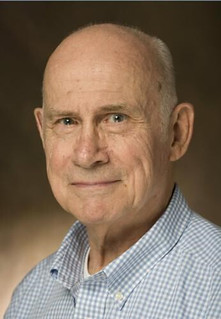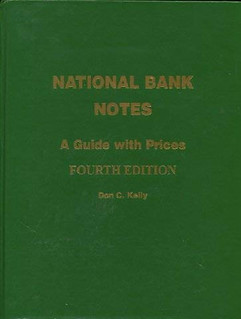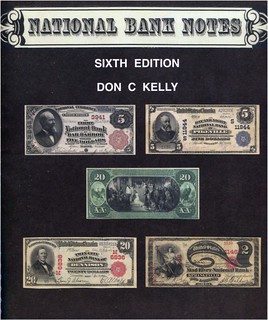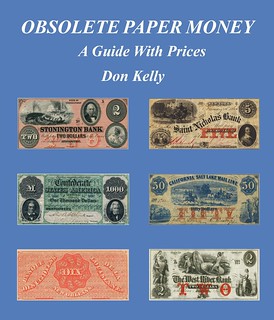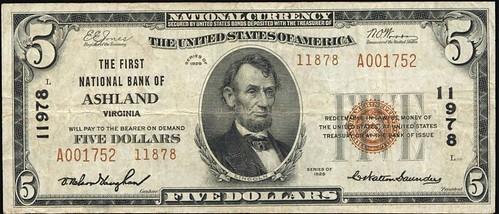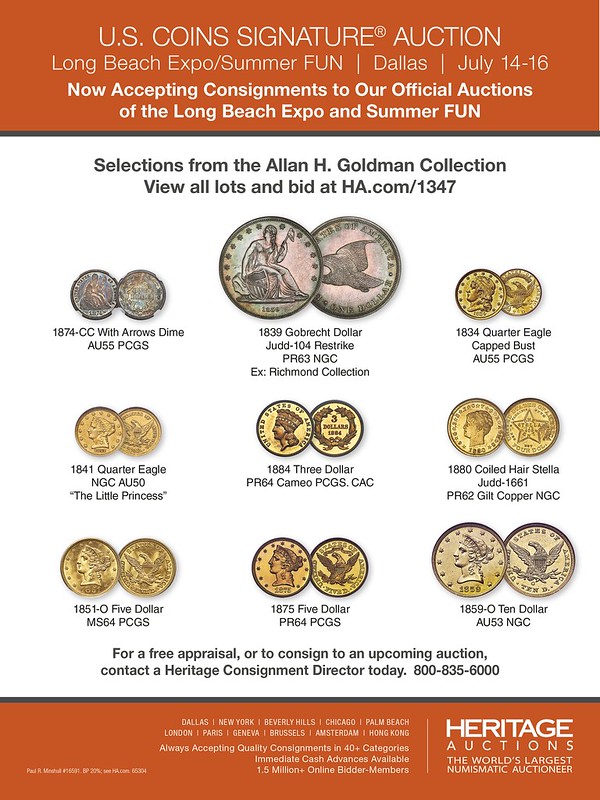
PREV ARTICLE
NEXT ARTICLE
FULL ISSUE
PREV FULL ISSUE
V25 2022 INDEX E-SYLUM ARCHIVE DONALD CLYDE KELLY (1933-2022)Jerry Fochtman notified me of the passing of paper money researcher and author Don C. Kelly. Here's an excerpt from his online obituary. -Editor
To read the complete obituary, see:
In 2015 Kelly was inducted into the Society of Paper Money's Hall of Fame. -Editor
To read the complete article, see:
Wendell Wolka writes:
"Don was both a friend and mentor who always had time to provide information, insights, or just have a friendly conversation. I cherish our friendship and will miss Don more than he could have possibly imagined. As Don was fond of saying, Mike Marchioni writes: "Great fellow and a wonderful source of information." Peter Huntoon submitted these thoughts. -Editor Don Kelly was a stalwart retail mail-order currency dealer for decades who agilely moved where the action was in the market. In recent years he moved aggressively into foreign currency where he found the pace and margins to be particularly attractive. Don's major contributions to currency collecting came in the form of price guides, first his various editions of his national bank note catalog and more recently his catalog of obsolete currency. Both were major undertakings. In at least the case of his national bank catalogs, he employed his son to help with the raw typing of the endeavor. Don was a popular and accomplished professor of physics at Miami University in Oxford, Ohio, which also was his alma mater. He capitalized on his expertise and teaching experience by authoring a best-selling undergraduate physics textbook. He was a fit individual and an accomplished athlete who competed in discus throwing. When he retired from his long tenure as professor, he rented a chauffeur-driven topless limo at the end of the academic year, gathered up his wife-both dressed regally-and they paraded around the campus and Oxford throwing waves like royalty to startled folks along their route. If my memory serves me correctly, there also was a bottle of champagne and toasts along the way. Early on, he avidly collected Ohio national bank notes wherein his collection ranked among the most comprehensive being formed. The national bug bit him hard and he dug into the history of the Ohio national banks and bankers. Being a quantitative scientist, he was one of the early compilers of national bank note census data. It was natural that when John Hickman was looking for a successor to carry on his nation-wide census before his death that he turned to Don to carry on that work. Don masterfully complied and in time during the early 2000s sold that burdensome mantle to Andrew Shiva and his National Currency Foundation where it continues to grow. That census now has well over a half million entries. Don served as the curator at the William Higgins National Bank Note Museum for at least a couple of years before the tenure of Larry Adams began. He enjoyed his summers in Okoboji, Iowa, in that capacity because they afforded him an opportunity to work on his national bank note catalog and the census data he incorporated in it. My dealings with Don primarily were in the realm of his census work. For years we collaborated on compiling the census data for Alaska, Arizona, New Mexico and Wyoming. In contrast, I could count the number of notes I bought from him on one hand. However, in the national bank note game, as in all numismatics, when a rarity comes up, the big deal is to be on the receiving end of the phone call announcing the discovery. The seller can place a good item with any number of people. I was a collector of Arizona nationals and Don had a complete listing of them with his census. Thus, he knew what I had. He chanced upon a Series of 1929 type 2 $20 from Tempe, the smallest issuer of that type in the state. It was otherwise unknown and remains so to this day. Furthermore, he noticed that it was the only type 2 from the state that I didn't have. He averred that it had to be high on my want list. Not the biggest deal in history, but I got that call. Sure, he exacted a pound of flesh in the form of a trade, but as I said, I got the call. You don't forget those. Don was a devoted family man of the first order. His wife Jane was a wonderful and supportive spouse. He wanted his investment in his collection to benefit his children and knew it was worth far more and would net more in his hands while alive. Thus, as his children reached young adulthood and could best benefit from a financial boost to launch their lives, he knew it was time to sell. This he did, splitting the proceeds into equal shares among them, never looking back. Don was a savvy businessman. One incident always stuck with me in this regard. One day he was perusing eBay and happened upon a lot that Amanda Sheheen had just listed. The note was a Series of 1929 $5 from a rather unremarkable bank; specifically, The First National Bank of Ashland, Virginia. However, Don noticed that the charter numbers on it were mismatched. The correct number 11978 in black had come out as 11878 in the duplicates printed in brown adjacent to the serial numbers. Small size national bank note errors were particularly hot at the time, and this one should be worth at least a couple of thousand. Sheheen hadn't spotted the error so it wasn't noted in the lot description. Don could wait until the lot played out, betting that no one else would notice and he could steal it. But what if it was noticed? He then would find himself in a bidding war with no room for a big profit when the smoke cleared. Don didn't need it all. All he wanted was to be a player and to get a good piece of the action. Without any hesitation what-so-ever, he was on the phone to Amanda, told her exactly what she had, and she, of course, cut him in as a 50-50 partner. They went on to handle it together to excellent advantage. Good business, good ethics and lasting friendship. Thanks, everyone! -Editor
For a 2011 Coin World article, see:
For Don Kelly's website, see:
Wayne Homren, Editor The Numismatic Bibliomania Society is a non-profit organization promoting numismatic literature. See our web site at coinbooks.org. To submit items for publication in The E-Sylum, write to the Editor at this address: whomren@gmail.com To subscribe go to: https://my.binhost.com/lists/listinfo/esylum All Rights Reserved. NBS Home Page Contact the NBS webmaster 
|
